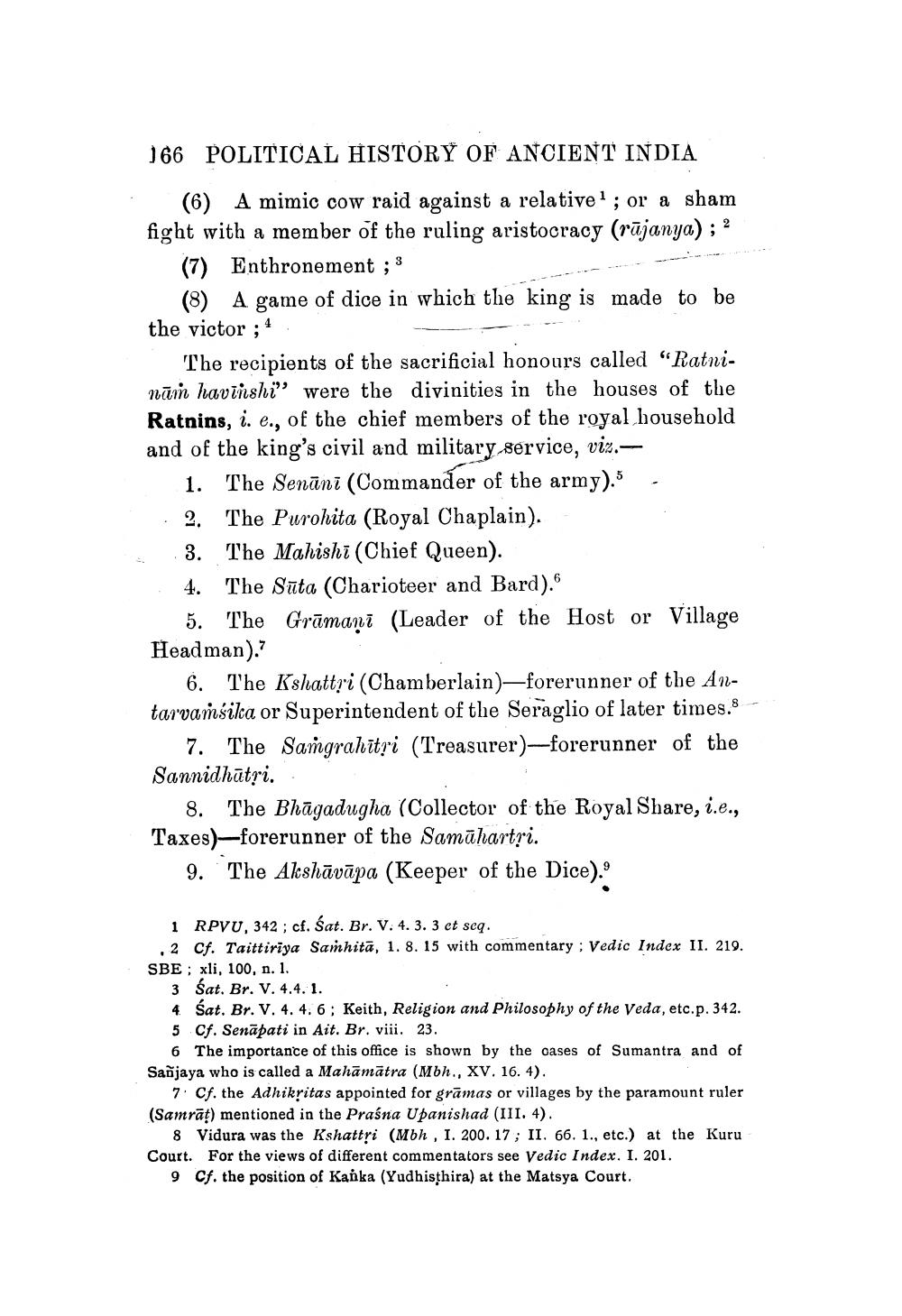________________
166 POLITICAL HISTORY OF ANCIENT INDIA
(6) A mimic cow raid against a relativel; or a sham fight with a member of the ruling aristocracy (rājanya) ; ?
(7) Enthronement ; s
(8) A game of dice in which the king is made to be the victor : 4.
The recipients of the sacrificial honours called “Ratninārin havinshi" were the divinities in the houses of the Ratnins, i. e., of the chief members of the royal household and of the king's civil and military service, viz.--
1. The Senāni (Commander of the army).- 2. The Purohita (Royal Chaplain). 3. The Mahishi (Chief Queen). 4. The Sūta (Charioteer and Bard).
5. The Grāmaņi (Leader of the Host or Village Headman).
6. The Kshatt?i (Chamberlain)—forerunner of the Antarvamsilca or Superintendent of the Seraglio of later times.
7. The Sangrahitri (Treasurer)—forerunner of the Sannidhātri.
8. The Bhagadugha (Collector of the Royal Share, i.e., Taxes)—forerunner of the Samūhartri.
9. The Akshāvāpa (Keeper of the Dice).
1 RPVU, 342; cf. Sat. Br. V. 4.3. 3 et seq. .2 Cf. Taittiriya Samhitā, 1. 8.15 with commentary : Vedic Index II. 219. SBE; xli, 100, n. 1.
3 Sat. Br. V. 4.4.1. 4. Sat. Br. V. 4. 4. 6; Keith, Religion and Philosophy of the Veda, etc.p. 342. 5 Cf. Senapati in Ait. Br. viii. 23.
6 The importance of this office is shown by the cases of Sumantra and of Sañjaya who is called a Mahāmātra (Mbh., XV. 16. 4).
7. Cf. the Adhikritas appointed for grāmas or villages by the paramount ruler (Samrāt) mentioned in the Praśna Upanishad (III. 4).
8 Vidura was the Kshattri (Mbh , I. 200. 17; II. 66. 1., etc.) at the Kuru Court. For the views of different commentators see Vedic Index. I. 201.
9 Cf. the position of Kanka (Yudhisthira) at the Matsya Court.




